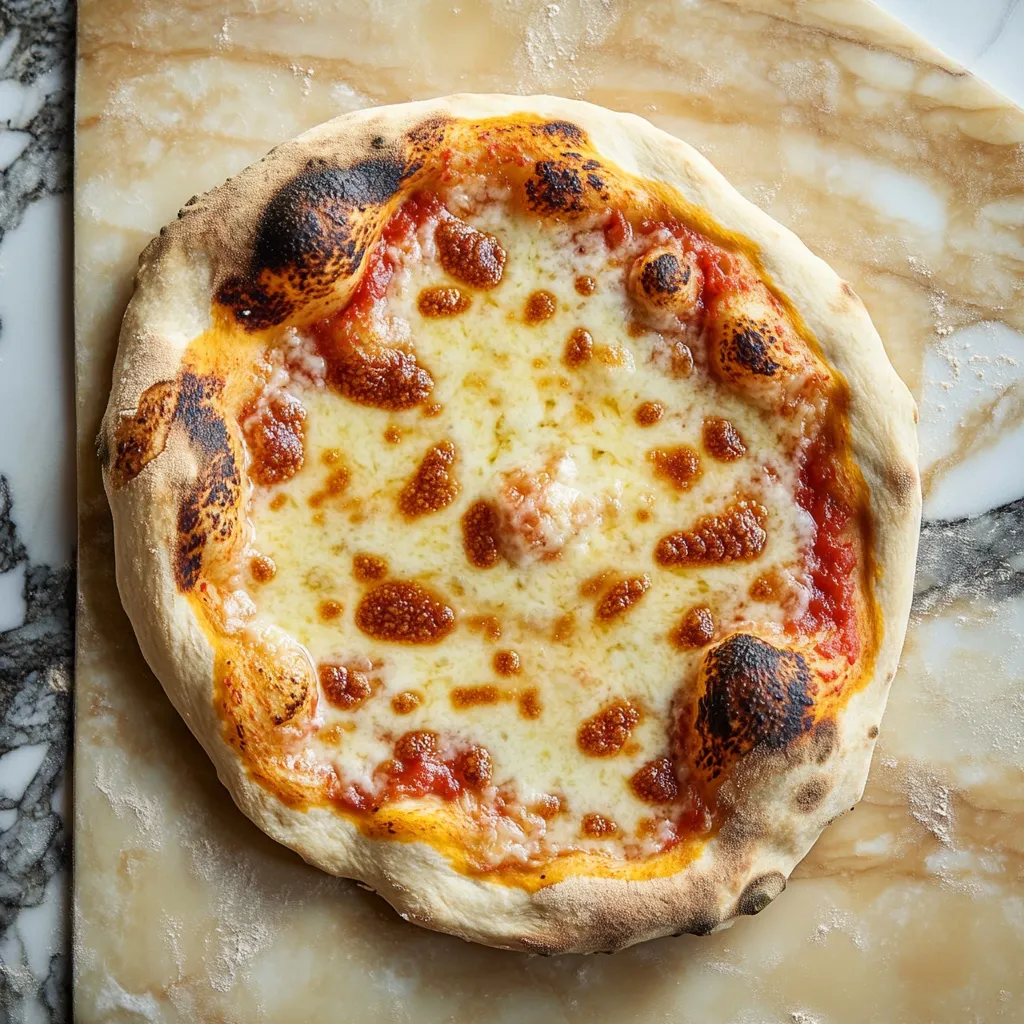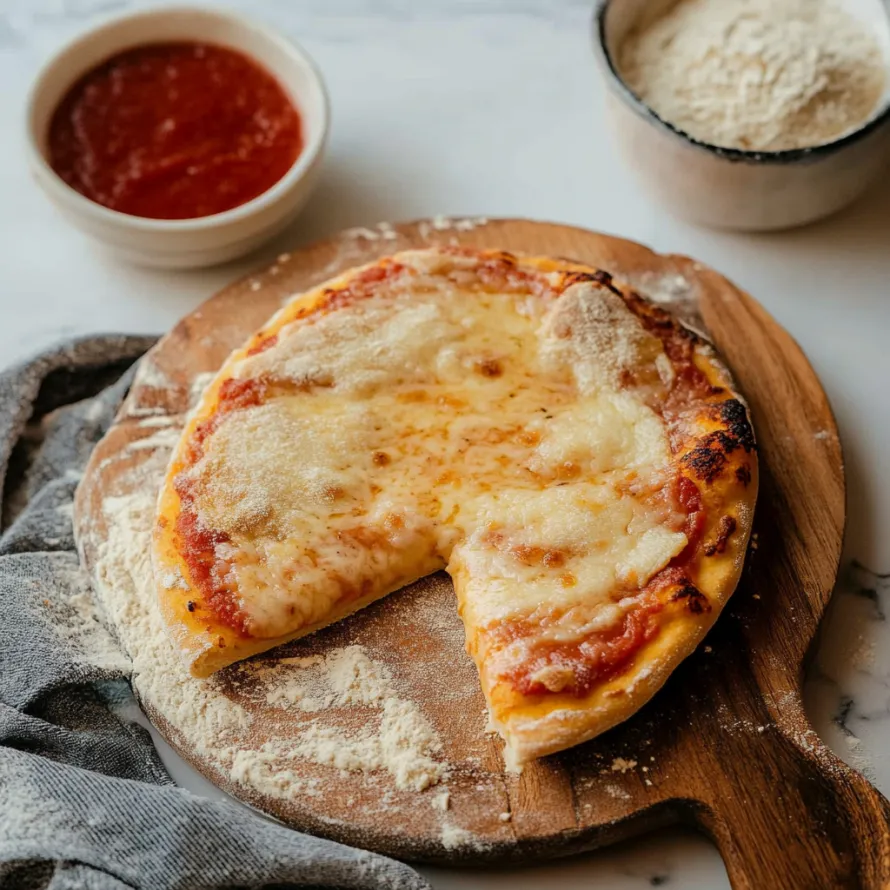 Save
Save
My homemade sourdough pizza dough turns regular pizza night into something special with its tangy bite and that amazing texture that's chewy inside and crispy outside. I've spent tons of time getting this technique just right, and now I'm thrilled to show you how simple it is to make real Neapolitan-style pizza in your kitchen.
I came up with this during lockdown when we couldn't go to our neighborhood pizza place. After trying it dozens of times, my family now begs for this pizza every Friday, and my friends always ask me how I make it.
Ingredients
- 500 grams type 00 flour: Creates that genuine Italian feel and builds amazing gluten structure
- 340 grams water: Hits the sweet spot for hydration, making dough that's easy to work with
- 75 grams levain: Adds natural rise and that wonderful tangy flavor
- 12 grams salt: Boosts all the tastes and helps build strong dough
- San Marzano tomatoes: Give a sweet clean taste without sourness for the best simple sauce
- Good quality olive oil: Brings richness and helps keep your crust from getting soggy
Easy Method
- Make Your Levain:
- Combine 30g starter, 30g flour and 30g water. Let it sit covered at roughly 78°F for 3-4 hours until it's bubbly. You'll know it's ready when it looks puffy and smells slightly sweet and tangy. This is what gives your dough its special flavor and lift.
- Put Together Your Dough:
- Put your levain, water, salt and flour in a bowl. Stir until you get a rough dough, then use wet hands to fold it over itself for about 30-60 seconds until it comes together. The dough should feel a bit tacky but not stick to your hands. Getting this right now means better fermentation later.
- Let It Rise:
- Cover the bowl and let the dough rise for 3-4 hours at 78-80°F. It won't double dramatically but will expand a bit. During this time, it builds flavor and strength as good acids form. Watch for tiny bubbles throughout the dough.
- Form Your Dough Balls:
- Lightly oil a 9×13 pan. Cut dough into 6 pieces about 150g each. Shape each into a tight ball by gathering edges and pinching, then roll under your cupped hand to create tension on top. Be gentle so you don't pop the gas bubbles. Each ball should have a smooth top.
- Second Rise Time:
- Cover your shaped balls and let them sit about 3 hours at 78°F. They'll get bigger and develop a soft fluffy feel. This step is super important for getting the right texture inside your final crust.
- Get Ready To Bake:
- Move your oven rack to the highest spot near the broiler. Put a pizza stone, steel or flipped baking sheet on the rack. Heat to 550°F for 30 minutes. Sprinkle a pizza peel or board with semolina flour. The high heat works like old-school pizza ovens.
- Shape And Top Your Pizza:
- Press dough gently from middle outward with fingertips, keeping the edge puffy. Stretch by turning it on your knuckles until it's about 8 inches across. Add blended tomato sauce, fresh mozzarella and whatever toppings you like.

The 00 flour really makes all the difference in this recipe. When I switched from regular flour to 00 flour, my family noticed right away how much better the texture and taste were. My daughter actually jumped up and down after trying her first bite of the new version.
Making Ahead
This dough actually gets better if you let it hang out in the fridge. After you've shaped your balls, you can stick them in the refrigerator for 2-3 days. The slow cold fermentation creates deeper flavors while the acids make the gluten stronger. When you're ready to cook, just pull them out about 1-2 hours before shaping so they can warm up a bit.
Perfecting Your Stretch
The secret to amazing Neapolitan pizza is keeping that puffy outer edge while making the middle nice and thin. When you stretch your dough, only push on the middle part, working your way out but stopping about an inch from the edge. Don't ever use a rolling pin - it'll squash all those nice air bubbles. If the dough keeps bouncing back when you stretch it, just give it a 5-minute break and try again. Taking your time will get you the best pizza.
Understanding Sourdough Timing
Sourdough timing changes depending on how warm your kitchen is. In hot kitchens over 80°F, your dough might be ready faster. In cooler rooms under 75°F, it'll probably take longer to rise. Look for signs rather than just watching the clock. Good dough looks puffy with tiny bubbles throughout, and feels light and a little sticky. Trust what you see and feel more than your timer.

There's something really special about making awesome pizza at home - grab a slice and dig in!
Common Recipe Questions
- → Can I use regular flour instead of 00 flour?
If you can’t find 00 flour, go for bread flour. For King Arthur 00 flour, mix in an extra 50-60 grams since it’s got less protein than usual.
- → How long will the dough keep in the fridge?
Dough balls hold up fine for up to 3 days when refrigerated, and the chill actually brings out more flavor. Freeze the dough for about a week or par-bake to store it longer.
- → What if I don’t have sourdough starter?
No starter? No problem—add roughly ¼ teaspoon of instant yeast. Let it sit about 2 hours, form the balls, then proof at room temp for 3-4 hours or refrigerate for 2 days.
- → How do I stop the dough from sticking to the peel?
Coat your peel or board well with cornmeal or semolina to keep it from getting stuck. Give it a little jiggle before sliding into the oven to make sure it’s not sticking.
- → How do I get the crust crispy?
Set your oven as hot as it goes (500-550°F) and preheat with a stone or steel for half an hour. Bake near the top of the oven and switch on the broiler for extra crisp and char.
- → Can I prep the pizza sauce ahead?
Go right ahead! Making the Neapolitan sauce early is totally fine, and storing it in the fridge keeps it fresh. Olive oil in the mix helps it last and prevents sogginess on the crust.
